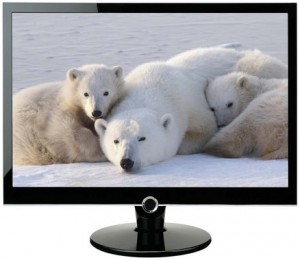US TV shipments sharp fall
June 4, 2013
 Shipments of television sets in the US declined by 11 per cent in the first quarter of 2013 compared to one year earlier, according to a TV Systems Intelligence update from IHS.
Shipments of television sets in the US declined by 11 per cent in the first quarter of 2013 compared to one year earlier, according to a TV Systems Intelligence update from IHS.
US TV shipments dropped to 6.6 million units, down from 7.4 million a year ago in the first quarter of 2012. Liquid-crystal display televisions (LCD TV) decreased by 7 per cent, while plasma plunged 39 per cent.
However, the news was not all bad: The average selling price (ASP) for LCD TVs increased 3 per cent, driven by a recovery in consumer confidence and a focus on replacing main TV sets with more full-featured products and larger screen sizes.
The fall in the US reflected the worldwide decrease of television shipments during the first quarter. However, global TV shipments declined far lower, down by less than 2 per cent.
The contraction in global volumes was driven by the decline in the remaining markets for bulky analogue cathode ray tube (CRT) sets as well as by the reduction in plasma demand. Other factors responsible for the decrease included a widespread cutback in LCD TV manufacturing volumes by major Japanese vendors, and a repositioning of the market toward fewer, larger-sized TV sets in the mature markets.
As a result of the ASP increase for LCD TVs, revenue was relatively stable by comparison, with total TV revenue dropping by 11 per cent in line with total shipments, while LCD TV revenue declined significantly less than shipments, by 4 per cent.
For brands relying on the LCD market, this creates an opportunity to expand their margins in the highly competitive TV market.
“The US market is starting to reposition toward higher-end TV sets,” said Veronica Thayer, analyst for consumer electronics & technology at IHS. “Now that most homes have at least one flat-panel TV, consumers have become more discerning in their tastes and place more value on features like light-emitting diode (LED) backlighting, supersized screens and interactive smart TVs.”
Supersized LCD TV sets larger than 50 inches in the diagonal dimension accounted for 27 per cent of US LCD TV unit shipments in the first quarter, up from 15 per cent one year before. Furthermore, these large sets represented over half of all US LCD TV revenue, at 53 per cent, up sharply from 39 per cent one year earlier.
For top television manufacturers, such high-cost sets represent an opportunity to maintain pricing despite declining unit sales in the United States.
Primarily because of increased shipments of 50-inch and 60-inch sets, the ASP for LCD TVs in the US increased year-on-year in the first quarter. The ASP stood at $704, up from $682 one year earlier.
Meanwhile, LED-backlit sets increased their share of US TV unit shipments to 72 per cent, up from 37 per cent during the first quarter of 2012. LED sets accounted for 76 per cent of total TV revenue, up from 52 per cent.
In terms of competitive positioning, Samsung earned the highest revenue from the US market for all types of televisions and in the key LCD TV segment, despite strong gains by Vizio.
South Korea’s Samsung during the first three months of 2013 accounted for 31 per cent of overall US television market revenue, up from 30 per cent during the same period in 2012. The company also expanded its share of US LCD TV revenue to 28 per cent, up from 27 per cent one year earlier.
Meanwhile, Vizio increased its share of TV revenue sharply, rising to 16 per cent, up from 11 per cent in 2012. The US-based company also boosted its portion of US LCD TV revenue to 18 per cent, up from 14 per cent one year earlier, due to the increase in number of large-screen-size TV models offered, particularly the very successful 60-inch, and helped by the brand’s entry into Best Buy.
In terms of volume, the squeeze on the total number of shipped TVs still favoured Samsung, with 1.6 million units in the first quarter this year. However, Vizio managed to edge out Samsung on US LCD TV volume during the period by a few thousand units.
“Samsung has retained its position as the leading premium television brand in the United States by capitalizing on demand for premium features, but Vizio is making strong moves in volumes and larger-sized models, although its current revenue is still lower,” Thayer added. “Ultimately, feature-rich sets and large screen sizes lead to higher TV ASPs, which can provide an opportunity for manufacturers to regain margins.”
